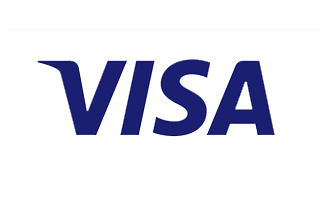
Whether you just bought your own gear or you're renting a SUP and paddle, you need to know a few things. A successful first-time SUP experience requires that you know how to stand up on the paddleboard. Your paddleboarding sessions will be fantastic with the information below. That said, here's all you need to put the "Stand Up" in SUP!
Is paddleboarding difficult?
Paddleboarding is not difficult! Any fast learner can master the basics in a day or two. Long-distance SUP touring and SUP surfing are a bit more challenging, though. But you can quickly learn recreational paddling with a few tips.
Essential Paddle Board Gear
For a memorable SUP experience, you'll need to stock up on a few things. Let's take a look!

1. Stand Up Paddle Board
This one is pretty obvious! Who can SUP without a paddleboard? No one! With the numerous good options out there, it's pretty easy to choose a paddleboard for beginners. All you need is a little information. Search for a paddleboard with a great combination of affordability, stability, and portability.
That said, the best paddleboard for a beginner should include all the required accessories to get you started.
2. SUP Paddle
Your paddle is just as crucial as the SUP! It comes in handy on every SUP experience. There are many adjustable SUP paddles out there, allowing you to adjust them to your size.
3. Paddle Board Leash
A paddleboard leash is essential. It eliminates the need to worry about losing your paddle. When you fall, your paddle may jerk out of your grip and float away. But if you have a leash, it stays attached to you.
4. Flashlight and Safety Whistle
It's essential to put your safety first! While paddling in the dark, a safety whistle and flashlight are your best friends.
5. Personal Flotation Device (PFD)
PFD helps to keep you safe. In the United States, paddleboards must include a life jacket for each person, and children below twelve must wear one before venturing outside a swimming or surfing area. It's the law!

6. Sunscreen
It's important to protect yourself from the sun. UV rays reflect off of open water and can cause sunburns. You can also use rash guards, visors, and hats to protect yourself from sun rays.
7. SUP Clothing
Choose paddleboard clothing depending on the weather. During warmer days, you can wear a swimsuit and put on a hat and rash guard for more sun protection. On cold days, it's best to go for a wetsuit. It's also good to have a dry change of clothes with you while paddling.

8. Shoes
While you may not need shoes on a warm day, your feet will thank you for wearing them when you're chilly. Go for shoes made for water, like water sport shoes or deck shoes. If the water is cold, neoprene shoes might be the best option.
9. A Dry Bag
Your precious possessions need to be kept away from water. You don't want your brand new action camera to get spoilt. Also, it would help if you considered a waterproof case to help protect your phone. All these, including your towel, can be kept in a dry bag.
10. Paddle Board Bag or Backpack
Your iSUP backpack or paddleboard bag is a great way to protect and store your board. Make sure you choose a good one!
How to Stand Up Paddle Board
Here are a few tips to help you stand up on the paddleboard.

- Carry your board into the water by its center handle.
- Once you are knee-deep into the water, place your board on the water's surface.
- While placing your paddle across the board, sit down with your knees on the board.
- Paddle on your knees for a while until you're reasonably comfortable. Now, you can learn to stand up!
- Place your feet where you had been resting your knees by moving one foot at a time.
Now, gently rise with your heels flat, and slide your hands to the paddle.
Basic Paddle Board Strokes You Need to Know
These are the strokes you should know before proceeding to more advanced paddling techniques.

1. Paddling Forward
It's the most crucial paddle move you should know. You can easily pull it off by rotating your shoulders and hips while holding your paddle over the water's surface. Ensure that the blade is angled forward.
2. Reverse Stroke
The paddle has to be behind you, near the board's tail. Once the blade is completely submerged in water, move the blade forward by holding your arm straight and twisting your torso.
3. Sweep Stroke
This stroke is used to turn your SUP. Bend your knees and lower your arms. With the blade perpendicular to your paddleboard, you should plunge the paddle forward into the water. Now, sweep the paddle away from the board using a half-circle motion.
4. Draw Stroke
This stroke is often used to pull up alongside something or squeeze into a small space. To pull it off, you should rotate your shoulders in the same direction you want your board to go. Pull the blade toward your direction.
How to get back to paddle board after falling

When you fall off your paddleboard, it can hit you, and this hurts! You can avoid this by falling away from your board. Since you are attached to it using your leash, it won't float away.
How do you get back on? Using one hand, grab the carry handle while treading water alongside the board. Pull yourself up to reach the opposite rail. Once you've reached it, kick hard and get on.
Conclusion
Paddleboarding is quite easy! If you're a quick study, you'll get the hang of it in less than two days. The tips above will help you stand up on your paddleboard. We also discussed the basic paddle strokes to help you have an incredible first time! In no time you'll be paddleboarding like a pro!
















